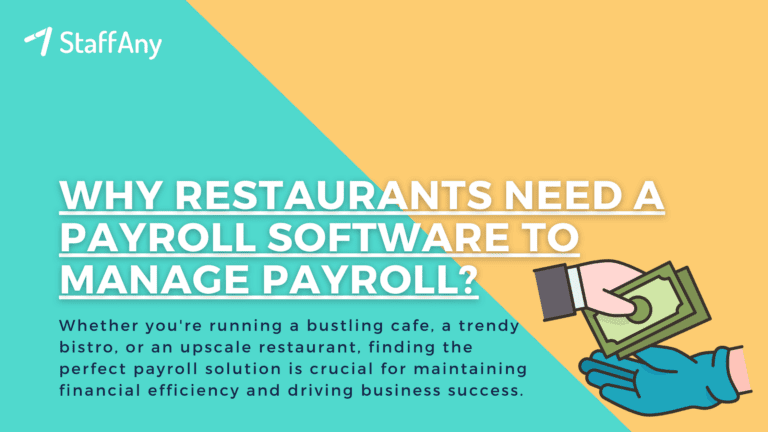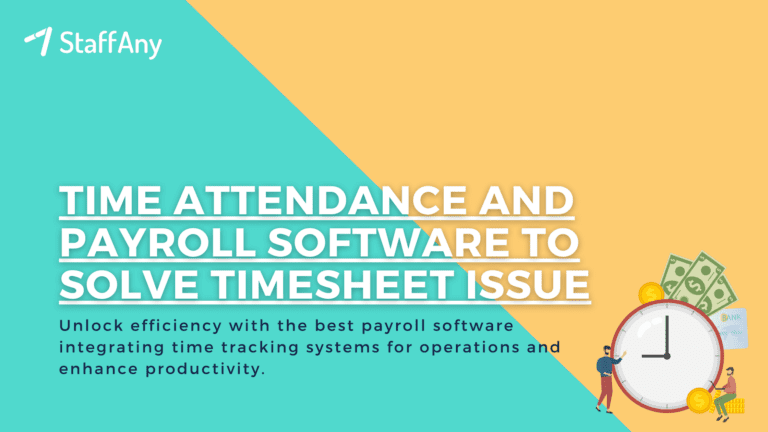StaffAny (us!) and F&B Connects recently did a mini gathering with F&B leaders in Malaysia from Shang You Enterprise, Kawkii, Double.O Holdings Group, Mr Fish Fish & Seafood Noodle and Tiga Ikan, and we’re pretty thankful for the bunch of juicy nuggets of wisdom for the F&B industry!
We covered topics that F&B owners often face, which are:
Monitoring and maintaining costs
Operations
Expanding your business locally and overseas
Here is what we have learnt about them.
Monitoring and Maintaining Costs
The first key question was if there was any way to accurately calculate the cost of goods sold (COGS) as it is the biggest cost induced for every business.
The solution? Rely on store managers! Store managers can keep track of COGS through the number of stocks and profits earned, as well as predict future sales.
One way they can do this is by looking at store management by role. For instance, an area manager must know 40% of store management, while store managers must know 60% of store management. Store managers must know 100% of the operation of their outlet.
It is recommended to reduce cost using part-time for manpower allocations (full time vs part time), store managers should monitor stocks regularly and order ingredients when needed to reduce wastage and COGS.
Secondly, make use of a system. Use a POS system to tally and estimate usage per month, as well as cross check with available stocks to check amount of wastage.This can be done through manually keying in the amount of ingredients used for each dish from the start.
Initially, it may be a difficult and tedious process to key in each and every ingredient used, but it will be worth it in the long run! Business owners have to calculate if the cost of using a system is worth the investment as it can be expensive.
In conclusion, depending on the number of outlets that you own, you can consider investing in a system or train your managers to keep track of the costs. This way, you will be able to reduce unnecessary wastage of ingredients, hence reducing COGS and increasing efficiency during stock taking!
Employee Welfare
The second question covered was the ways that employers can ensure a happy working environment for their employees to both increase productivity and retention rate.
Having an approachable HR manager is one of the solutions recommended. Employees are increasingly prioritising their working environments, so the HR managers must be down to earth to ensure they can be approached for any issues.
Monthly training and gatherings can be held with employees from different stores to reduce formality. It also allows staff to interact with each other on a more friendly basis, which then creates a strong bond between employees so that they are comfortable to talk to each other.
Secondly, maintain a working culture in stores to reduce communication issues and improve service quality. More communication, less mistakes and misunderstandings, employees will then be happier working together.
This can be done with the store manager to brief incoming shift employees on changes such as discounts and promotions, and issues from the day before like customer complaints. To do so, each store must have clear job descriptions for each staff so that everyone knows their roles, and establish a reward and encouragement system to improve morale.
In general, a good HR manager will be able to provide a healthy and happy working environment for their staff, while a good working culture will ensure minimal errors during operations. This can increase the retention rate of employees.
Expanding Your Business
There are two types of F&B businesses: achieve recognition as the leading restaurant only in selected regions, or be known amongst customers throughout the country. Which one should you aspire to be?
To find out, you must do it through trial and error. Knowing your target audience, and who your customers are, is the first step to establish your market. Use that to determine the size of your store (choosing between opening a kiosk or a restaurant) to reduce rental and cut down overall cost.
For instance, in the Malaysia market, it is possible to target the mass market with Halal food; for Chinese food, there is a need to target areas with more Chinese population instead. Try out different areas with different target audiences to see what works for your company!
Hence, by establishing your target audience, and then the market, it allows the business to expand more precisely and accurately, reducing sunk cost and losses.
Truly, it was a fruitful and insightful night! Everyone was willing to share their thoughts and secrets just to help each other out, and the deep discussions we engaged about specifically F&B issues allowed everyone to take home wonderful advice for their businesses. We are heartened to know that after today’s event, everyone was happy and satisfied!
PS: If you’re ever interested in joining our next Malaysia community event, fill up this form here so that we can invite you!









